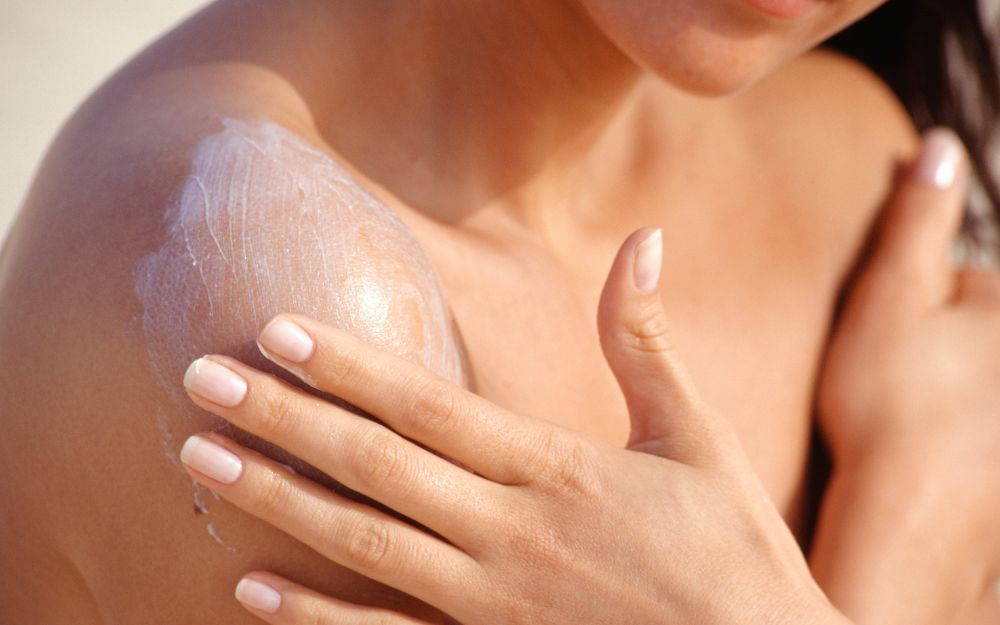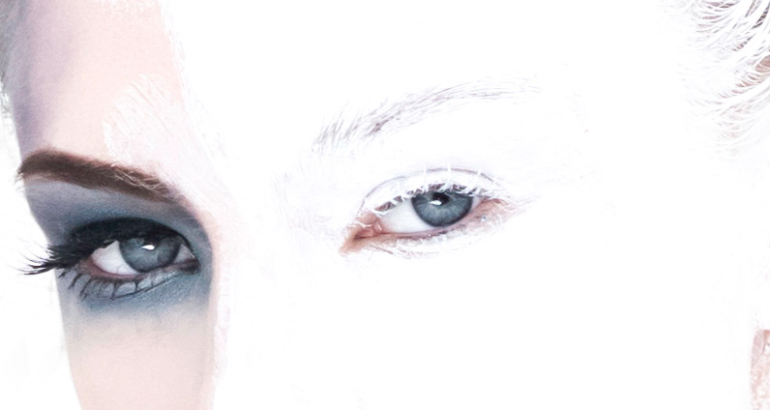by Senior Skincare Specialist Kim van Zyl
Welcome to our enlightening journey through the sun-soaked realms of health and wellness. The sun, our celestial companion and source of life has captivated humanity for millennia with its warmth, light, and the vital energy it bestows upon us. In this blog, we’ll embark on a quest to unravel the intricate relationship between the sun, sunblock, and Vitamin D deficiency.
The sun, often revered as a symbol of vitality and happiness, plays an integral role in our lives beyond its aesthetic and metaphorical significance. Its rays provide us with essential Vitamin D, a nutrient fundamental for bone health, immune function, and overall wellness. However, this mutually beneficial relationship comes with certain limitations.
In our pursuit of health and protection, we have devised sunscreens and sunblocks to shield our skin from the sun’s potentially harmful effects. Yet, the delicate balance between enjoying the sun responsibly and guarding against its potential harm remains a dynamic challenge, especially when it comes to maintaining adequate levels of Vitamin D.
Join us as we dive deep into the science and practical tips surrounding Vitamin D deficiency, sun exposure, sunblock usage, and the delicate dance to ensure our bodies receive the right amount of sun-kissed goodness without compromising our well-being.
Table of contents
-
- What is Vitamin D deficiency?
- What happens when you don’t have enough Vitamin D?
- What causes Vitamin D deficiency?
- What are the signs of Vitamin D deficiency?
- Vitamin D deficiency and your “mood”
- Vitamin D Deficiency and Your Skin
- The Effects of Vitamin D Deficiency on Your Skin
- Who is Most Likely to Get Vitamin D Deficiency?
- How to Maintain Your Vitamin D Levels
- Why and How to Use Your Sunblock
- In Conclusion: Embrace the Sun Wisely
What is Vitamin D deficiency?
Vitamin D deficiency is a health condition where the body doesn’t have enough Vitamin D, a crucial nutrient necessary for overall well-being. Vitamin D is often called the “sunshine vitamin” because our skin can only produce it when exposed to sunlight. However, there are other ways to get it, like through certain foods and supplements.
Think of Vitamin D as the key that unlocks various processes in your body. For example, it helps absorb calcium and phosphorus (which are like the building blocks for your bones and teeth), and without enough Vitamin D, your body struggles to use these vital minerals properly.
What happens when you don’t have enough Vitamin D?
Here’s a breakdown of why it’s so important and what happens when you don’t have enough:
Bone Health: Vitamin D helps your body absorb calcium from the food you eat. Calcium is essential for strong bones and teeth. When you lack vitamin D, your body can’t absorb enough calcium, which can lead to weak and brittle bones.
Immune System Support: Vitamin D plays a role in supporting your immune system, which helps you fight off illnesses. It’s like a shield protecting your body from infections and diseases.
Muscle Strength: Vitamin D is also important for muscle function and strength. When you’re deficient, your muscles may become weaker and less coordinated.
Overall Health: Vitamin D deficiency isn’t just about bones and muscles. Research suggests it might be linked to other health issues like heart disease, diabetes, certain cancers, and autoimmune disorders. So, having enough Vitamin D ensures the smooth operation of your entire body.
What causes Vitamin D deficiency?
Contrary to popular belief, lack of sun exposure is not the only thing that can lead to Vitamin D deficiency. Let’s look at more reasons why people might become deficient:
Lack of sun exposure
If you don’t get enough sunlight, especially in places with less sun or during winter, your body may not produce sufficient Vitamin D. Spending more time indoors or covering up your skin can also limit sunlight absorption.
Dietary insufficiency
If you don’t eat foods rich in Vitamin D, such as fatty fish, fortified dairy products, or eggs, you might not be getting enough of this nutrient through your diet.
Health conditions
Certain medical conditions affecting your digestive tract can hinder Vitamin D absorption, putting you at risk of deficiency.
Obesity
People with higher body fat may need more Vitamin D because it can be stored in fat cells. If you’re overweight, you might need extra vitamin D to make up for this storage.
What are the signs of Vitamin D deficiency?
Vitamin D deficiency can manifest in various ways, and its symptoms can range from subtle to more noticeable. Here are some common signs and symptoms associated with a deficiency in Vitamin D.
Energy Drain and Weariness: Have you been feeling like your energy tank is constantly running on empty? Vitamin D deficiency could be a culprit, leaving you feeling fatigued and weaker than usual, no matter how much rest you get.
Bone and Muscle Aches: Ever experienced those mysterious aches in your bones and muscles, making you feel like you’ve just run a marathon when you haven’t? That could be your body signaling a need for more Vitamin D.
Getting Sick a Bit Too Often: If you seem to catch every bug that passes by, your immune system might need a boost. Vitamin D deficiency can weaken your immune response, making you more susceptible to illnesses.
Mood Swings and the Blues: Feeling like your mood is playing a rollercoaster ride? Low Vitamin D levels might be having a say in that, potentially nudging you towards feelings of sadness or depression.
Healing at a Snail’s Pace: Ever wondered why that scrape or bruise is taking forever to heal? Vitamin D plays a role in tissue repair, and if you’re running low, your healing process might be sluggish.
Hairy Loss: If you’re noticing more hair loss than usual, it could be tied to vitamin D levels. While the research is ongoing, you can read more here.
Bones Development during Childhood: For the little ones, watch out for bowed legs, delayed growth, or soft bones. These could be signs of rickets due to insufficient vitamin D.
Mental Fog and Cloudiness: Ever find it hard to concentrate or feel like your brain is in a haze? Vitamin D deficiency might be affecting your cognitive abilities.
Back Trouble: Chronic lower back pain making itself known? Your spine might be asking for a Vitamin D top-up to support bone health.
Remember, these signs can overlap with other health issues, so if something feels off, chatting with a healthcare professional and getting a blood test to determine your Vitamin D levels is always a great idea.
Taking care of your Vitamin D intake could be the sunny solution your body needs for a healthier, happier you!
Vitamin D deficiency and your “mood”
The link between Vitamin D deficiency and mood disorders, including depression, is an area of growing interest and research in the field of mental health. Vitamin D, often referred to as the “sunshine vitamin,” has a significant impact on various bodily functions, including brain health and mood regulation.
Serotonin Production
Vitamin D may influence the production and regulation of serotonin, a neurotransmitter in the brain that plays a crucial role in mood stabilization. Serotonin is often associated with feelings of well-being and happiness.
Neurotransmitter Function
Vitamin D receptors are present in areas of the brain involved in mood and depression. It is believed that Vitamin D may modulate the synthesis and release of neurotransmitters, which are chemicals that transmit signals in the brain.
Inflammation and Oxidative Stress
Vitamin D has anti-inflammatory and antioxidant properties. Inflammation and oxidative stress in the brain have been linked to mood disorders, including depression. Vitamin D’s role in reducing inflammation may contribute to improved mood.
Brain Structure and Function
Studies suggest that Vitamin D may influence brain structure and function. Deficiency could potentially affect brain regions associated with mood regulation and cognition.
Seasonal Affective Disorder (SAD)
Seasonal Affective Disorder is a type of depression that occurs during specific seasons, typically fall and winter when there is less sunlight. It is often treated with light therapy, emphasizing the role of sunlight and, consequently, Vitamin D.
Population-based studies have found a higher prevalence of low vitamin D levels in individuals with depression compared to those without. It’s a compelling observation, indicating the potential importance of maintaining adequate Vitamin D levels for mental health.
It’s crucial to emphasize that while there’s a growing body of evidence suggesting a connection between Vitamin D deficiency and mood disorders, including depression, more extensive research is needed to fully understand the mechanisms and establish clear guidelines for Vitamin D supplementation as a treatment for mood disorders.
If you’re experiencing symptoms of depression or mood disorders, it’s essential to consult a mental health professional for a thorough evaluation and appropriate guidance.
Vitamin D Deficiency and Your Skin
Vitamin D deficiency and the skin are intricately connected, with the skin playing a vital role in the synthesis of vitamin D and its impact on the skin’s microbiome. Let’s explore this fascinating relationship and its effects on skin health.
Skin as a Vitamin D Source
The skin is a major source of vitamin D for the body. When exposed to ultraviolet B (UVB) rays from sunlight, a cholesterol compound in the skin is converted into previtamin D3, which eventually transforms into vitamin D3, the active form of vitamin D.
Vitamin D Synthesis
UVB radiation from sunlight is crucial for the skin’s ability to produce vitamin D. The conversion of 7-dehydrocholesterol in the skin to previtamin D3 is a key step in this process.
Impact on Skin Health
Vitamin D is essential for maintaining healthy skin. It supports skin cell growth, repair, and immune function, aiding in the prevention of skin infections and inflammation.
Role in Skin Conditions
Vitamin D deficiency has been associated with various skin conditions, including psoriasis, eczema, acne, and vitiligo. It’s believed that adequate Vitamin D levels can help manage and alleviate symptoms of these skin conditions.
Skin Microbiome
The skin is inhabited by a diverse array of microorganisms, collectively known as the skin microbiome. This microbiome includes bacteria, fungi, viruses, and other microbes. Vitamin D deficiency can disrupt the balance of the skin microbiome, potentially leading to dysbiosis (imbalance). This dysbiosis may contribute to skin conditions and negatively impact skin health.
Immunomodulatory Effects
Vitamin D has immunomodulatory properties, influencing the immune response in the skin. An adequate level of Vitamin D helps regulate the immune system’s interaction with the skin microbiome.
Skin Infections
Vitamin D is known to have antimicrobial properties, and it plays a role in protecting the skin against infections. Insufficient levels of Vitamin D might compromise the skin’s ability to fend off infections.
Maintaining sufficient levels of Vitamin D through sensible sun exposure, diet, or supplements can contribute to a healthy skin microbiome and, in turn, overall skin health.
The Effects of Vitamin D Deficiency on Your Skin
Insufficient levels of Vitamin D can have noticeable effects on the skin, often manifesting in various skin conditions. Here’s an examination of the skin changes associated with Vitamin D deficiency:
Dry Skin
Description: Dry skin, or xerosis, occurs when the skin doesn’t retain enough moisture, leading to a rough, scaly, or flaky appearance. It can also be itchy and may crack or peel.
Relation to Vitamin D Deficiency: Vitamin D is essential for skin health and hydration. Insufficient levels of vitamin D may impair the skin’s ability to retain moisture, resulting in dry skin.
Eczema (Atopic Dermatitis)
Description: Eczema is a chronic inflammatory skin condition characterized by red, itchy, and inflamed patches of skin. It often appears in the folds of the elbows, knees, face, and hands.
Relation to Vitamin D Deficiency: Vitamin D plays a role in modulating the immune response and has anti-inflammatory properties. Inadequate vitamin D levels may contribute to the development or worsening of eczema.
Psoriasis
Description: Psoriasis is a chronic skin condition that speeds up the life cycle of skin cells, resulting in the buildup of thick, scaly patches on the skin’s surface. These patches are often red, itchy, and sometimes painful.
Relation to Vitamin D Deficiency: Vitamin D has immune-modulating and anti-inflammatory effects. Low vitamin D levels may be associated with the development and exacerbation of psoriasis.
It’s important to note that while there’s a connection between Vitamin D deficiency and these skin conditions, Vitamin D supplementation should be done under the guidance of a healthcare professional.
Additionally, managing these skin conditions often requires a comprehensive approach, including appropriate medical treatments, a healthy diet, good skincare practices, and lifestyle adjustments.
Who is Most Likely to Get Vitamin D Deficiency?
In the realm of health and nutrition, Vitamin D stands as a vital player, offering an array of benefits that extend beyond bone health. However, certain groups within our society are more susceptible to experiencing a shortfall in this essential nutrient. The reasons behind this vulnerability vary, from lifestyle choices to physiological factors.
Let’s delve into the key groups at a heightened risk of Vitamin D deficiency, shedding light on why understanding and addressing this concern is crucial for their well-being.
Individuals with Limited Sun Exposure
People who have limited exposure to sunlight, either due to their geographical location, work indoors, or lifestyle choices (e.g., staying indoors most of the time), are at a higher risk of Vitamin D deficiency.
Elderly Individuals
Aging decreases the skin’s ability to produce Vitamin D when exposed to sunlight. Older adults, especially those living in nursing homes or long-term care facilities, may have limited outdoor activities, further exacerbating the deficiency.
People with Darker Skin Tones
Individuals with darker skin have more melanin, which reduces the skin’s ability to produce Vitamin D from sunlight. Consequently, they require more sun exposure to generate sufficient Vitamin D.
Individuals Who Cover Most of Their Skin
People who wear clothing that covers most of their skin for cultural, religious, or personal reasons may have limited exposure to sunlight, leading to a higher risk of Vitamin D deficiency.
People with Specific Medical Conditions
Individuals with medical conditions that affect fat absorption in the intestines, such as Crohn’s disease, celiac disease, or cystic fibrosis, may have difficulty absorbing Vitamin D properly, leading to deficiency.
Obese or Overweight Individuals
Vitamin D is fat-soluble and can get sequestered in fat cells. Obese or overweight individuals may have lower circulating levels of Vitamin D due to its storage in fat, which can increase the risk of deficiency.
Individuals with Limited Dietary Sources of Vitamin D
Vegetarians, vegans, or those with specific dietary restrictions may have limited sources of Vitamin D in their diet, especially if they don’t consume fortified foods or fatty fish.
People Living in Northern Latitudes
Individuals residing in northern latitudes or areas with limited sunlight, especially during winter months, may experience reduced sun exposure, making it challenging to obtain adequate Vitamin D from sunlight alone.
Those with Malabsorption Conditions
Individuals with gastrointestinal disorders that affect nutrient absorption, such as inflammatory bowel disease, may have difficulty absorbing Vitamin D from their diet.
How to Maintain Your Vitamin D Levels
Optimizing vitamin D intake through lifestyle modifications involves a balanced approach that includes sensible sun exposure, dietary adjustments, and supplements when necessary. Here are lifestyle modifications to ensure adequate Vitamin D levels:
Sun Exposure
Regular but Controlled Exposure: Aim for 15-20 minutes of sun exposure on your face, arms, legs, or back, without sunscreen, between 10 AM and 3 PM a few times a week. Sun exposure in the early morning or late afternoon is often gentler on the skin while providing sufficient UVB rays for vitamin D synthesis.
Dietary Choices
Foods Rich in Vitamin D: Incorporate vitamin D-rich foods like fatty fish (salmon, mackerel), egg yolks, fortified dairy products, fortified plant-based milk, and mushrooms into your diet.
Supplements as a Complement: Consider vitamin D supplements, especially if you have limited sun exposure or dietary restrictions that make it challenging to meet your vitamin D needs.
Regular Physical Activity
Outdoor Exercise: Engage in outdoor activities like walking, jogging, or sports to combine physical activity with sun exposure, helping your body produce vitamin D.
Regular Workouts: Maintain a consistent exercise routine to support overall health and enhance vitamin D levels.
Balanced Sun Safety Measures
Sunscreen Use: When prolonged sun exposure is unavoidable, use sunscreen on exposed areas to protect your skin from harmful UV rays while still allowing some vitamin D synthesis.
Wear Protective Clothing: If you’re spending an extended period in the sun, wear hats, long sleeves, and sunglasses to minimize exposure.
Regular Health Check-ups
Vitamin D Testing: Include vitamin D testing in your regular health check-ups to monitor your levels and adjust your lifestyle or supplementation accordingly.
Healthy Body Weight
Maintain a Healthy Weight: If overweight or obese, strive to maintain a healthy weight through a balanced diet and regular exercise, as excess fat can sequester vitamin D.
Knowledge and Education
Stay Informed: Educate yourself about the importance of vitamin D and its sources to make informed dietary and lifestyle choices.
Consult Healthcare Professionals: Seek advice from healthcare providers or nutritionists to tailor vitamin D intake to your specific needs and circumstances.
Incorporate Vitamin D into Your Family Routine
Family-Friendly Activities: Plan outdoor family activities to encourage sun exposure while bonding and staying healthy together.
Balancing sun exposure, dietary habits, and informed supplementation, if needed, is essential for maintaining adequate Vitamin D levels. Strive for a holistic approach that fits your lifestyle, ensuring optimal vitamin D intake for overall health and well-being. Always consult a healthcare professional for personalized guidance and recommendations.
Why and How to Use Your Sunblock
Sunblock, while essential for protecting your skin from harmful UV rays and reducing the risk of skin cancer and premature aging, can limit the production of Vitamin D in the skin because it blocks UVB rays. Here are some considerations to balance sunblock usage while aiming to maintain adequate Vitamin D levels:
Selective Application: Apply sunblock primarily to your face, neck, and hands, areas that are most exposed to the sun and are more susceptible to sun damage. This allows other areas, like your arms and legs, to receive some sun exposure.
Use Sunblock for Prolonged Sun Exposure: If you plan to be in the sun for extended periods, especially during peak sun hours, it’s important to use sunblock on all exposed skin to prevent sunburn and skin damage.
Mindful Sunblock Choice: Opt for a broad-spectrum sunscreen that protects against both UVA and UVB rays. Choose a sunblock with a sun protection factor (SPF) of 30 or higher to provide adequate protection.
Apply Sunblock After Initial Sun Exposure: Allow yourself 10-15 minutes of sun exposure before applying sunblock. This initial exposure helps kickstart Vitamin D production. After this period, apply sunblock to protect your skin.
Here is a link to our recommended sunblock’s
In Conclusion: Embrace the Sun Wisely
Navigating the delicate dance between embracing the sun’s benefits and protecting ourselves from its potential harm is a crucial aspect of our journey to optimal health and wellness. The sun, our ever-present celestial companion, offers us the precious gift of Vitamin D – a key to our well-being.
As we’ve delved into the intricate relationship between the sun, sunblock, and Vitamin D deficiency, we’ve uncovered the essence of balance. Balancing sun exposure, incorporating Vitamin D-rich foods into our diets, and using sunblock smartly, allows us to harness the sun’s goodness while safeguarding our skin.
Remember, moderation and mindfulness are paramount. Enjoy the sun responsibly, nourish your body, and prioritize your well-being. If you have specific concerns or need personalized skincare advice, our team at Dr Nerina Wilkinson + Associates is here to guide you on this enlightening journey.
May your path be illuminated with the radiance of health, and may you embrace the sun’s warm embrace wisely, for a sun-soaked life of vitality and joy.
Here’s to a radiant you, inside and out! 🌞✨
Written by Senior Skincare Specialist Kim van Zyl








